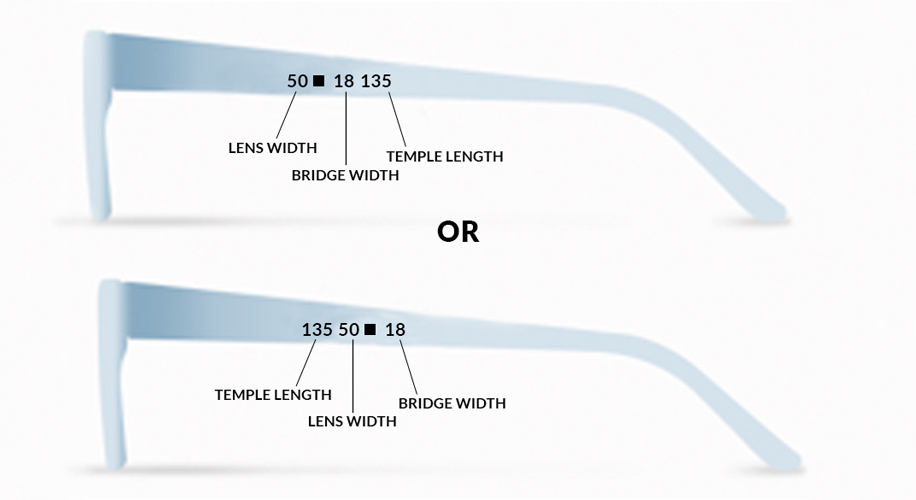As you age, your eyes and face shape naturally change, prompting the need for a new pair of eyeglasses every few years. However, buying glasses online can introduce new challenges for many. Even though modern technology enables people to virtually try on frames, customers will have no idea about whether those frames will actually fit and be comfortable on their face. Fortunately, it is easy to find frame measurements that are suited for you! We have outlined some steps to measure your frame size and get to buying your perfect pair of glasses.

Before opting to measure your frames by hand, we recommend taking a look at your frames. Some frames have a set of numbers on the frame, located on the temples or the inside of the bridge. These numbers, known as the “box system”, indicate the frame’s lens width, bridge width, and temple arm length, with the bridge and lens width separated by a square symbol.

This is how to measure the individual parts of the frame:
Lens width is the horizontal diameter of the lens. Another term for this measurement is eye size. Start from the right inside of the lens edge to the other side.
The bridge width measures the part of the frame that is across the bridge of your nose. Begin measurement at the top of the bridge from the edge of one lens to the other edge. It is important to start at the lens edge and not the frame edge.
The temple arm length describes the length of the temples, which are connected to the front of the glasses frame and positioned on your ear. Measure this part by starting at the width of the widest part of the lens, from the right inside of one edge to the left.
There is a leeway of a few millimeters for each frame part, so don’t worry about getting the most exact measurements possible. Frames with adjustable nose pads and/or adjustable temple arms allow for even more leeway in frame measurements.
One of the most important dimensions to ensure a great fit is the frame width, which is not printed on the temple arm. To measure this by yourself, take a millimeter ruler or measuring tape and measure horizontally across the entire front frame side. Be sure to include any protruding pieces in the measurement, such as lug and hinge pieces. You can also easily measure any part of the frame, like lens height and bridge, using the same method and tools. Please note that if your SPH on your prescription is +/- 6.00, we recommend buying frames with a lens width lower than 50 millimeters to ensure that your lenses are thin.
